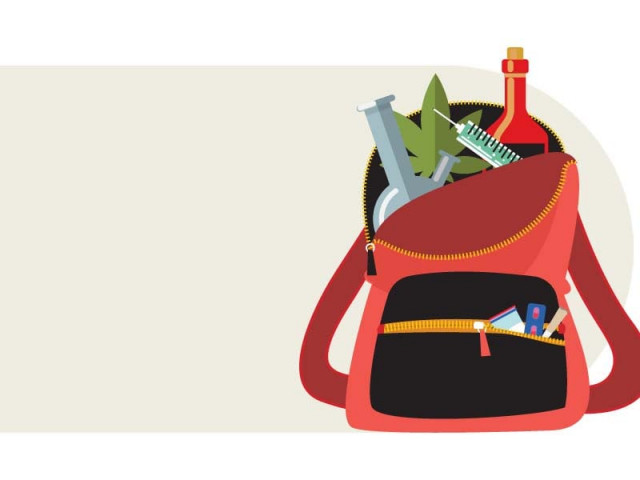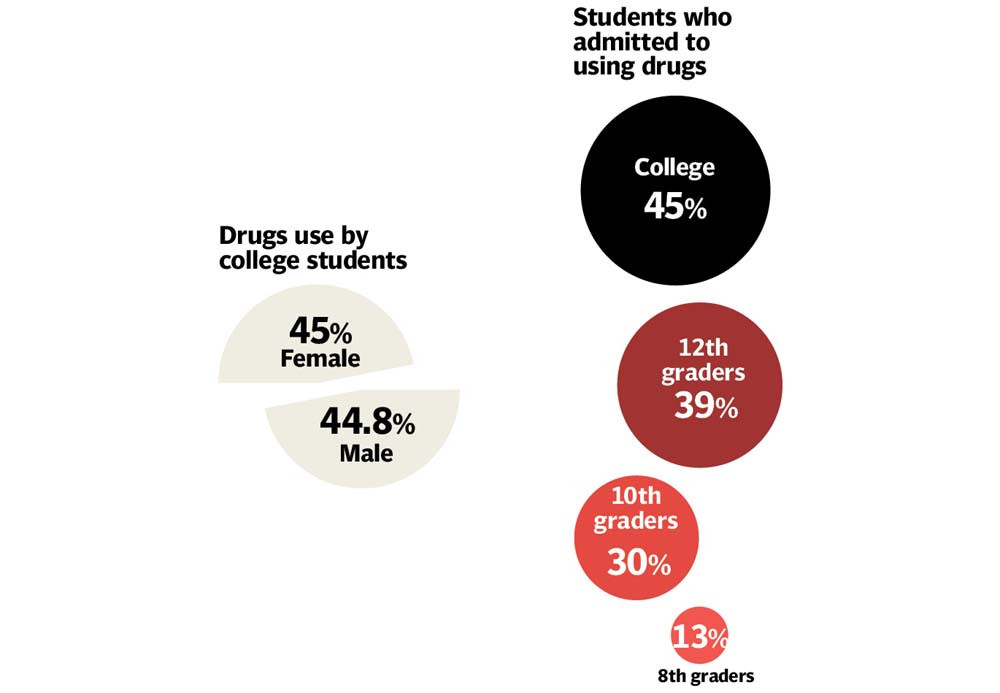Educational institutions plagued by narcotics
Controversial report details the extent of drug use within schools and colleges

Educational institutions are suffering at the hands of drugs. Every tenth student is suffering from substance addiction, while every second educational institution has allegedly become a hotbed of drugs.
A confidential report was prepared by experts in psychology and social styles. The revelations and reasons, while keeping their names confidential, are shocking.
The alarming revelation is that educational institutions have become the safest place for students of all backgrounds to take substances out of compulsion or to reduce mental stress. These institutions have no effective mechanism for every student and sometimes, these incidents are ignored to protect the educational institutions from disrepute. These incidents are not only limited to elite educational institutions.
Students taking narcotics were separated into three categories within the report.
The first category includes students who come from wealthy backgrounds. Experts discovered that despite having all the comforts of the world, these students are deprived of attention from their parents and they largely live on disposable and market-cooked food from morning to night. Secondly are students whose parents do not lack wealth, but mutuality. They were found to ignore their children due to turbulent marriages.
The third category contained children who accompany their parents to lavish private parties and use drugs to enhance their status.
In this regard, a letter was recently issued by the Punjab Education Department, according to which it was made mandatory for every educational institution to obtain a drug-free certificate, while mobile phones were also banned. Drug officers will enforce the drug-free area certificate.
Educationist Muhammad Naeem Anjum Qazi said that obtaining various certificates from the education department is not the real solution to prevent drugs in educational institutions. However, whenever there is a drug-related incident in an educational institution, similar measures are taken and then silence prevails for a long time.

On the other hand, psychologist Dr Nasir, Dr Rabia Hameed and social style professor Moin Ahmed said that at the time of admission, information related to the student’s psychological condition should also be entered in the admission form, in order to counsel students and parents on any mental stress or preoccupations.
A detailed calculation based on national and international surveys revealed that students who admitted to using drugs in college used them for 4.94 days. The annual prevalence of drug use was highest among college students (45%), followed by 12th graders (39%), 10th graders (30%), and 8th graders (13%). Additionally, in January, 18% of college students took an illegal substance other than hashish. The annual prevalence of drug use among full-time college students was 44.9%.
The annual prevalence of drug use by female college students was higher (45%) than that of male students (44.8%). Additionally, the following drugs are most often used each year by full-time male college students: alcohol (73.7%), drugs (42.5%), Adderall (14.6%), MDMA (7.2%), cocaine (7%), LSD (6.8%) and tranquilizers (3.8%). On the other hand, among full-time female college students, the annual prevalence of drug usage was as follows: alcohol (75.1%), marijuana (42.2%), Adderall (8.8%), cocaine (4.3%), tranquilizers (3.3%), M. DMA (2.7%), and LSD (2.6%). Additionally, the most commonly abused substances among medical students in the US are alcohol (91.3%), drugs (26.2%), tobacco (17.3%), amphetamines (6%), sedatives (2.3%), and cocaine (2.3%). One-third of currently-enrolled students report the usage of hashish each year.
According to Dr Masood Shaikh, this issue is critical since there is a two percent increase in the number of students taking drugs in educational institutions. In the coming decade, there is a risk that it will spread like wildfire and only parents are capable of stopping it. Regardless of age group, children should be brought with lunchboxes rather than pocket money and their bags should be checked regularly.
Anti-narcotics campaign consultant Syed Zulfiqar Hussain said that there is a need to conduct a campaign against drugs in educational institutions and hostels. He added that hostel dwellers use more soft drugs. He said that there is an urgent need for the training of non-teaching staff and the owners of private universities, colleges and school owners to deal with drugs on-site. Hussain said that 18 educational institutions were granted the status of drug-free campuses, which is a good intervention to prevent drug abuse and more educational institutions will be made smoke and drug-free.
Published in The Express Tribune, February 11th, 2023.



















COMMENTS
Comments are moderated and generally will be posted if they are on-topic and not abusive.
For more information, please see our Comments FAQ